Can the sights and sounds of nature make you feel better? These 'forest bathers' say yes
Every Thursday for the past several months, a small group of people has set out from a little building in Flagstaff to soak in the sights, sounds and smells of nature.
They traipse down the sidewalk and onto a dirt trail. They dodge overhanging branches and help each other up the steep parts. They pull out their phones to look up the names of flowers, and they take frequent breaks: to rest, to catch their breath and most importantly, to talk.
That group includes cancer patients, survivors and their friends and family, but it's one of many in Arizona exploring the potential benefits of a practice called forest bathing.
Forest bathing doesn’t involve any bathtubs. Originally a Japanese practice called shinrin-yoku, it's a cross between meditation and nature therapy. Practitioners spend several hours out in nature, sometimes covering less than a quarter of a mile, walking slowly and “bathing” their senses in the textures of the outdoors.
For decades, researchers and doctors in Japan and Korea have touted the benefits of the practice: reduced stress hormone production, lower heart rate and blood pressure, increased feelings of well-being and happiness.
Now, professionals in the U.S., including some in Arizona, are advocating for the practice to take off here. Not everyone is on board. For some physicians, the practice just isn’t on their radar, while others want more data before they would consider forest bathing a medical treatment. But much like yoga and meditation, advocates think the practice should become a mainstream part of holistic health.
A complete guide: Best things to see and do at Petrified Forest and Painted Desert
For groups like the one at the Cancer Support Community in Flagstaff, the benefits extend beyond the science. Cancer patients and survivors and their family members described their gratitude for the sense of kinship fostered among the participants.
Whether practiced together or in solitude, forest bathing has a dedicated contingent of proponents. There’s still more research to be done, they say, but what they’ve seen so far is enough to recommend it to both the healthy and people experiencing a range of conditions, from physical ailments to mental illness.
And even though much of Arizona is covered in desert rather than forest, researchers and physicians say that there are still plenty of benefits to be found right in your backyard.
Studying forest bathing in the desert
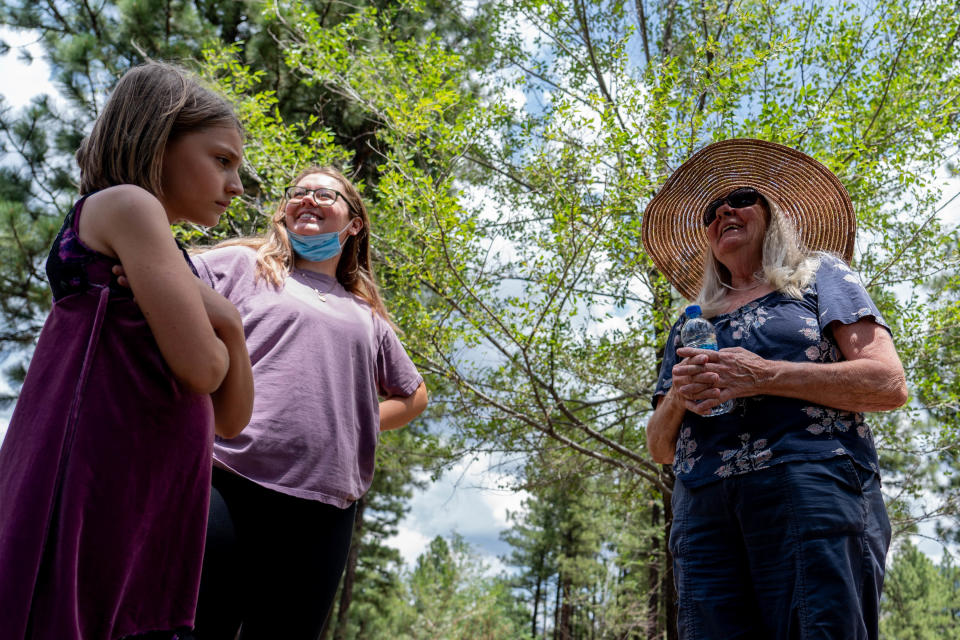
It seems built into the name: “forest bathing,” surely, requires a forest. But Gary Nabhan thinks otherwise.
Nabhan, a desert ecologist and botanist affiliated with the University of Arizona, has been fascinated by the landscapes and cultures of the desert for over 40 years. And learning about the practice of forest bathing inspired him to study whether there might be any health benefits to spending time in the desert — not only in actual forests.
To try to figure that out, Nabhan and his team examined several existing studies, building on previous research by Nabhan on desert plants and pollinators, to catalog a list of volatile organic compounds, or VOCs for short, that can be found in the desert around Tucson and Ajo.
VOCs, simply put, are chemicals that can end up in the air we breathe. You might have heard of some types of VOCs, found in building materials or products around the house, that can be detrimental to human health. But VOCs can also be released by plants. Sometimes these plant-produced chemical compounds attract pollinators; other times they defend the plant from predators. And many of them are beneficial for humans.
When they put together their list, Nabhan and his team realized that some of the VOCs found in desert plants overlap with compounds that have proven positive health effects for humans in forest bathing studies in Japan and Korea.
Those benefits may be amplified by the monsoon. Environmental factors like heat, humidity, rain and wind can all affect the dispersal of VOCs into the surrounding air. On the other hand, they may be dampened by air pollution, which is a rampant issue in urban areas of Arizona.
Nabhan said more research will be needed to determine whether spending time in the desert exposes people to high enough concentrations of those compounds to notice a discernible difference to their health. He is currently designing a study with collaborators at the Andrew Weil Center for Integrative Medicine, including Dr. Esther Sternberg, the research director of the Weil Center, to quantify the health effects before, during and after experiences in the desert.
That's in line with previous research from the Weil Center that has used wearables to measure stress and immune responses to built and natural environments.
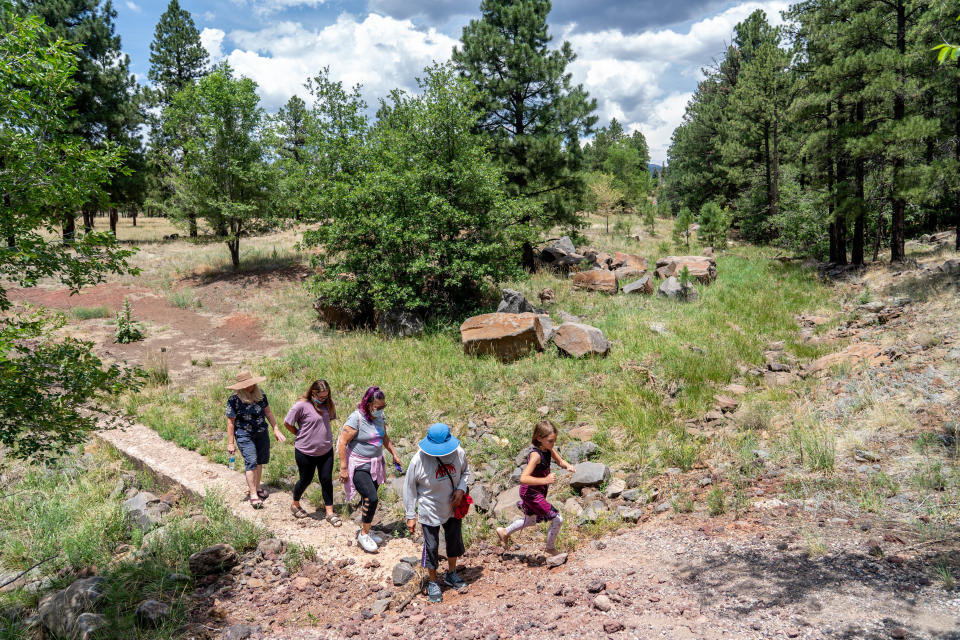
Nabhan has also built a fragrance garden in Ajo and is in the process of planning another for the UA’s Health Center. He hopes the garden may help patients combat anxiety before and after their appointments.
But for the time being, he says, beyond the existing research, the smells of soil, creosote and other plants that fill the air after a monsoon storm are enough to convince him that the desert has valuable properties that should be appreciated and investigated.
“Boom, all of a sudden the barometric pressure changes, the ozone level changes, the wind kicks up, we see lightning and thunder,” he said. “And then we start to smell this entourage, almost like an orchestra of fragrances that people haven't had a full opportunity to explain.”
A prescription for nature?
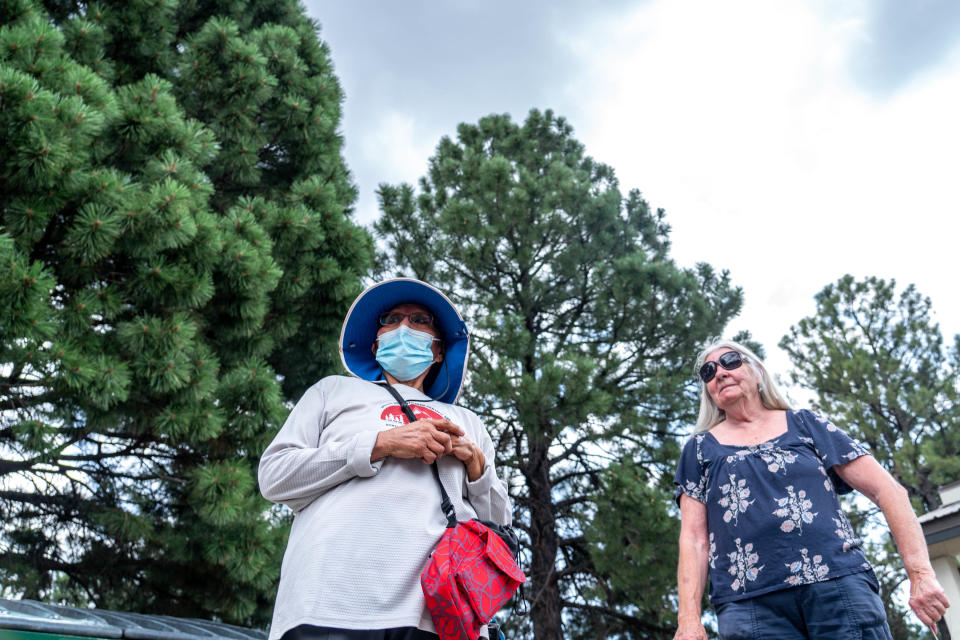
Suzanne Bartlett Hackenmiller used to consider herself a conventionally minded physician. A series of personal challenges and some new training at the University of Arizona changed that.
Hackenmiller, an OB-GYN and integrative medicine physician who splits her time between Arizona and the Midwest, described how, several years ago, her son was diagnosed with autism and her husband was diagnosed with Stage 4 lung cancer within five years of each other.
At the same time, she found herself fielding questions from patients at her OB-GYN practice asking about hormones, supplements and holistic health — topics to which she’d had little to no exposure while she was in medical school.
So she decided to study integrative medicine. She learned more about nutrition, the mind-body connection and herbal medicine. And she tried to implement those holistic techniques while caring for her family members as well as her patients.
More: How Glen Canyon is reemerging from depths of Lake Powell
Then her husband died in 2012. As Hackenmiller grieved, she found that she needed to be outdoors. She threw herself into activities like trail running, mountain biking, kayaking and extreme triathlons. She chased feelings of adrenaline and adventure.
But eventually she realized that she needed to find balance. She couldn’t constantly be on the go. A couple of years after she finished her integrative medicine program, she picked up a guide to forest bathing.
She found herself drawn to the practice and started leading walks for others. She saw that people were moved by the experience. And she began incorporating it into her medical practice.
“Sometimes I do write (forest bathing) on a prescription pad, like a prescription,” she said. “Sometimes I will say you know, ‘When was the last time you went outside and played or … what was your favorite thing to do when you were a child outdoors and when was the last time you did that?’”
She said she’s seen results. Patients love it, and they often report feeling better afterward.
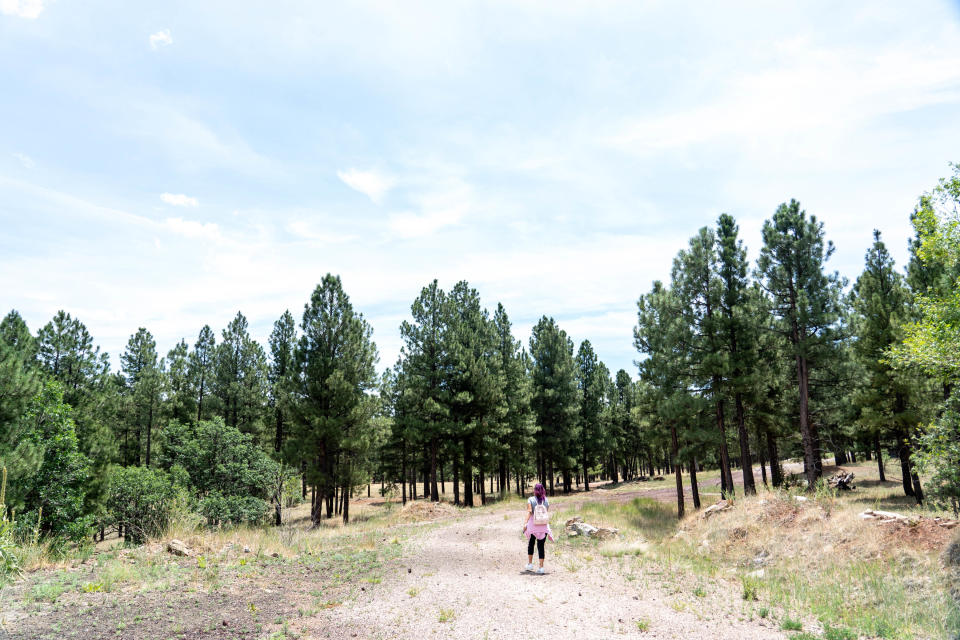
“I've had patients return and tell me that that recommendation, that prescription, was single handedly the most helpful thing they've ever been recommended for their mental health,” she said. “I think increasingly there are more doctors around who are starting to say, ‘Wow, there's something here.’”
Amos Clifford agrees. Clifford runs a company called the Association of Nature and Forest Therapy Guides and Programs headquartered in Prescott that trains forest bathing guides. He said he’s seen an increase not only in the number of companies teaching licensed forest bathing guides, but also in the number of doctors and physicians taking the training courses.
Clifford hopes that having more health care professionals involved will mobilize the health care network to “connect people with their memory of who they are and their belonging to nature,” he said.
“Anything that's new or different tends to get dismissed by a lot of our population as a kind of a woo-woo practice,” he said. “Doctors don’t go for it if it’s woo-woo, they go for it if there's science. And so training a bunch of doctors and having them incorporate it in one way or another in their practice (may elevate) shinrin-yoku, forest therapy in general, in the public consciousness to the tier of a real legitimate practice.”
That’s something that both Clifford and Hackenmiller acknowledged will need more research. Some studies on forest bathing could be improved methodologically, Clifford said, and the field, like any other scientific field, should be open to constructive criticism. But Hackenmiller pointed to several studies that she believes are already quantifying the anecdotal effects she’s seen in her patients.
And she doesn’t see a reason why doctors like her should wait to implement the activity, especially when there are little to no negative consequences of doing it.
For cancer patients, it’s more than forest bathing
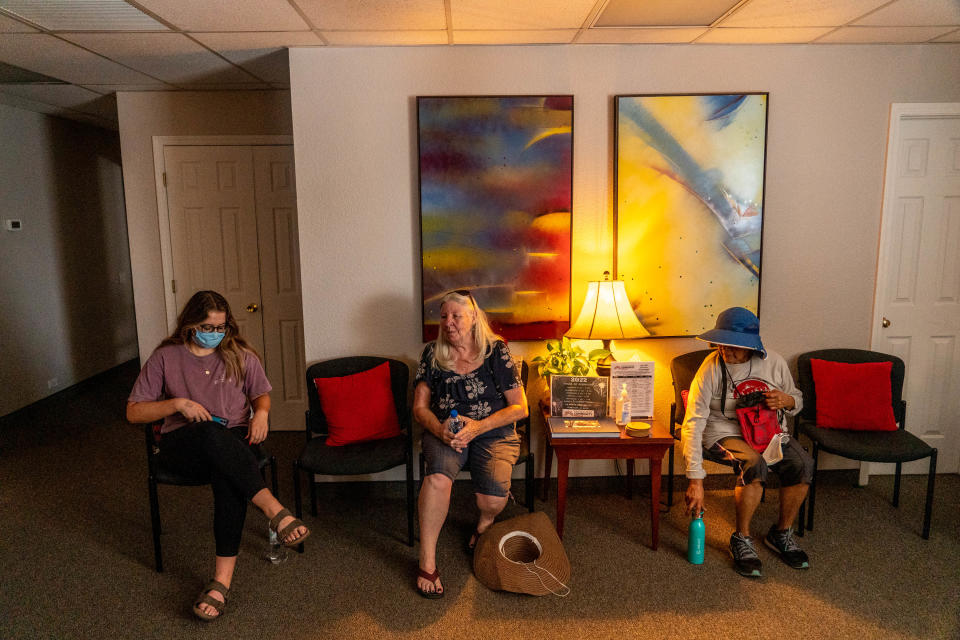
Lisa Perez came to Flagstaff for the trees.
She grew up in Santa Barbara, Calif., between the ocean and the mountains, and gained a deep appreciation for nature there.
“It’s really my sanctuary,” she said. “It’s where I get recharged.”
She moved to Phoenix several years ago when her dad got cancer, and she found that she had a hard time. The heat, the desolate landscape and the urban sprawl took a toll on her.
But Flagstaff offered the environment she longed for. “When I came up here for the first time, I said ‘This feels like Santa Barbara without the ocean,’” she said. “It felt like home.”
In September 2017 she moved to Flagstaff.
“When you walk on the ground, you feel it," she said. "It receives you.”
That was before her diagnosis with a rare cancer (Perez asked that The Republic not name the type of cancer for privacy reasons). She says the treatment was more painful than childbirth, which she knows from experience — she had her son without any medication or anesthetics.
When she first came to the Cancer Support Community, she was in the middle of treatment and could hardly sit or stand without feeling intense pain. She vomited frequently.
She decided to join a forest bathing group anyway.
“They said, ‘Come on sister, let’s go for a walk,’” she recalls.
The others on that walk physically helped Perez, holding her up when she needed it, and they were patient, and waited for her when she needed them to.
“They didn’t care that I was slow,” she said. “We support each other and help each other.”
They stopped to take pictures by a tree she liked. Perez said she loved the feeling of exploring, even though they were close by the support group’s building. It comforted her, even though she felt weak.
“It’s like the Earth is accepting you," she said. "And the trees, they get it.”
Now, like clockwork, she spends 50 minutes every Thursday walking with the group. If a regular member doesn’t show up, she said, they all text to check in and make sure the person is okay.
Perez has noticed a difference, physically, as she heals from treatment. She’s gone from barely being able to stand to walking confidently. She said the nurses have recently commented on the new spring in her step.
Dr. Stephanie Rice, a radiation oncologist in Flagstaff who sees multiple members of the Cancer Support Community there, said that while forest bathing wasn’t specifically on her radar as a recommendation for patients, finding supportive physical activities, and a community to do them with, is key.
“Exercise in general has been shown to counteract the tiredness that comes from radiation. So I do often recommend exercise of whatever (kind) people enjoy,” Rice said.
She has recommended other activities like yoga, acupuncture and reiki to her patients, and says practices that have been typically associated with traditional or holistic medicine are becoming more mainstream. She has noticed that integrative wellness programs are becoming more accessible in small communities, and that those types of holistic health programs offer both physical and emotional support where patients need them.
“I do think that being in nature, and spending time doing that while people are going through this, is really healing and helpful,” she said. She also described the importance of community outreach programs like one she observed at SUNY Upstate, where she worked after residency. She appreciated seeing a forum for patients to talk to one another and support each other.
Perez’s experience aligns with Rice’s observations. Perez credits her improvements partly to her time in nature — she notices a change every time she forest bathes — but also to the community around her. She mentioned an Indigenous-specific group through the Cancer Support Community that felt particularly comforting to her, giving her new friends who can immediately relate to her and help her through hard times.
That, she said, has been as uplifting as the chance to breathe fresh air and feel the pine needles between her feet.
“The difference between being able to finish treatment and not being able to, that’s literally the difference between life and death,” she said. “It’s the camaraderie, it’s the instantaneous understanding, the sisterhood, the bonding.”
Independent coverage of bioscience in Arizona is supported by a grant from the Flinn Foundation.
Melina Walling is a bioscience reporter who covers COVID-19, health, technology, agriculture and the environment. You can contact her via email at mwalling@gannett.com or on Twitter @MelinaWalling.
This article originally appeared on Arizona Republic: Forest bathing, a holistic wellness practice, offers a path to healing

